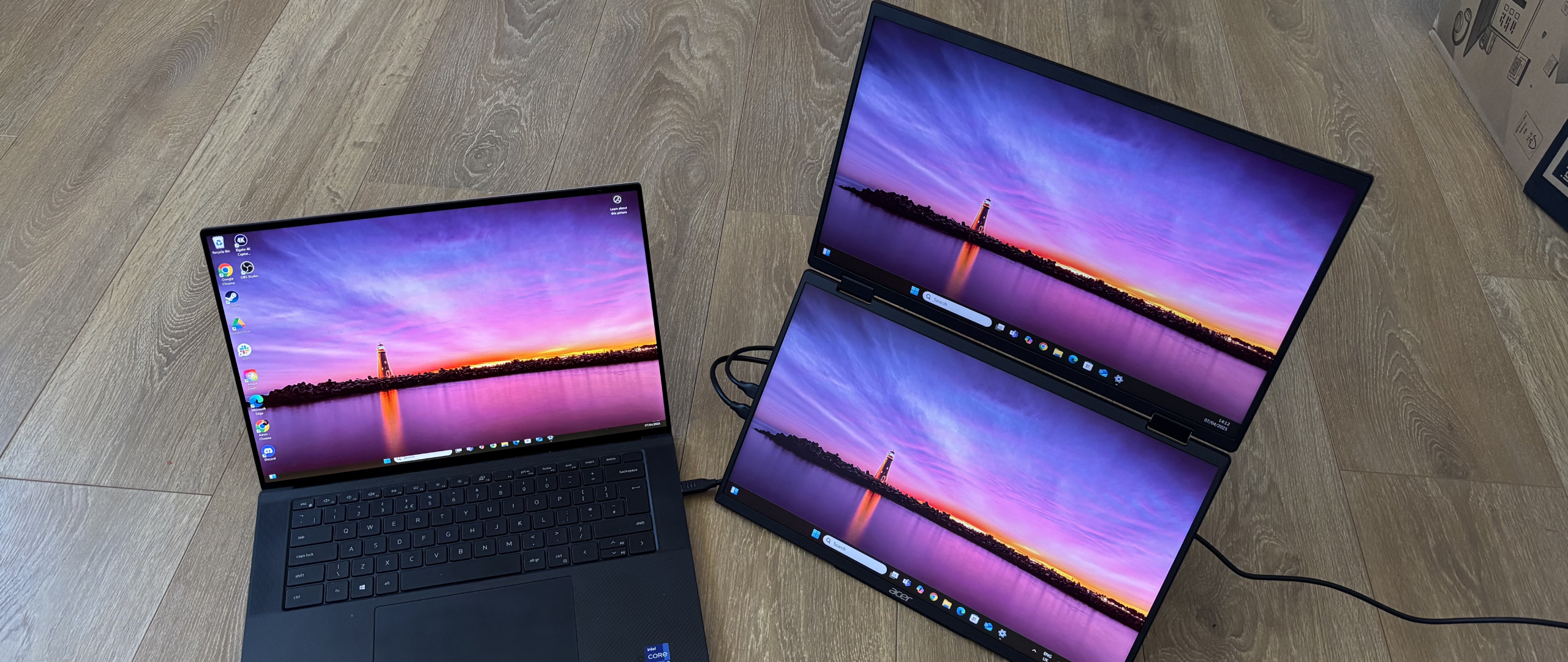TechRadar Verdict
Overall, the Acer PD3 Dual-Screen Portable Monitor is a great display to take with you between home and a place of work or on a business trip. Being plug and play, there's limited set up time. However, it's also quite large and hefty; not to mention it requires its own power source which is even more weight in your bag. It costs a premium as well, making it an option you really have to weigh up for your specific needs.
Pros
- +
Easy to set up and use
- +
Only requires one video output for multiple displays
Cons
- -
Quite large and heavy
- -
Requires an extra outlet
- -
Priced at a premium
Why you can trust TechRadar
Acer PD3 Dual-Screen Portable Monitor: Two-minute review
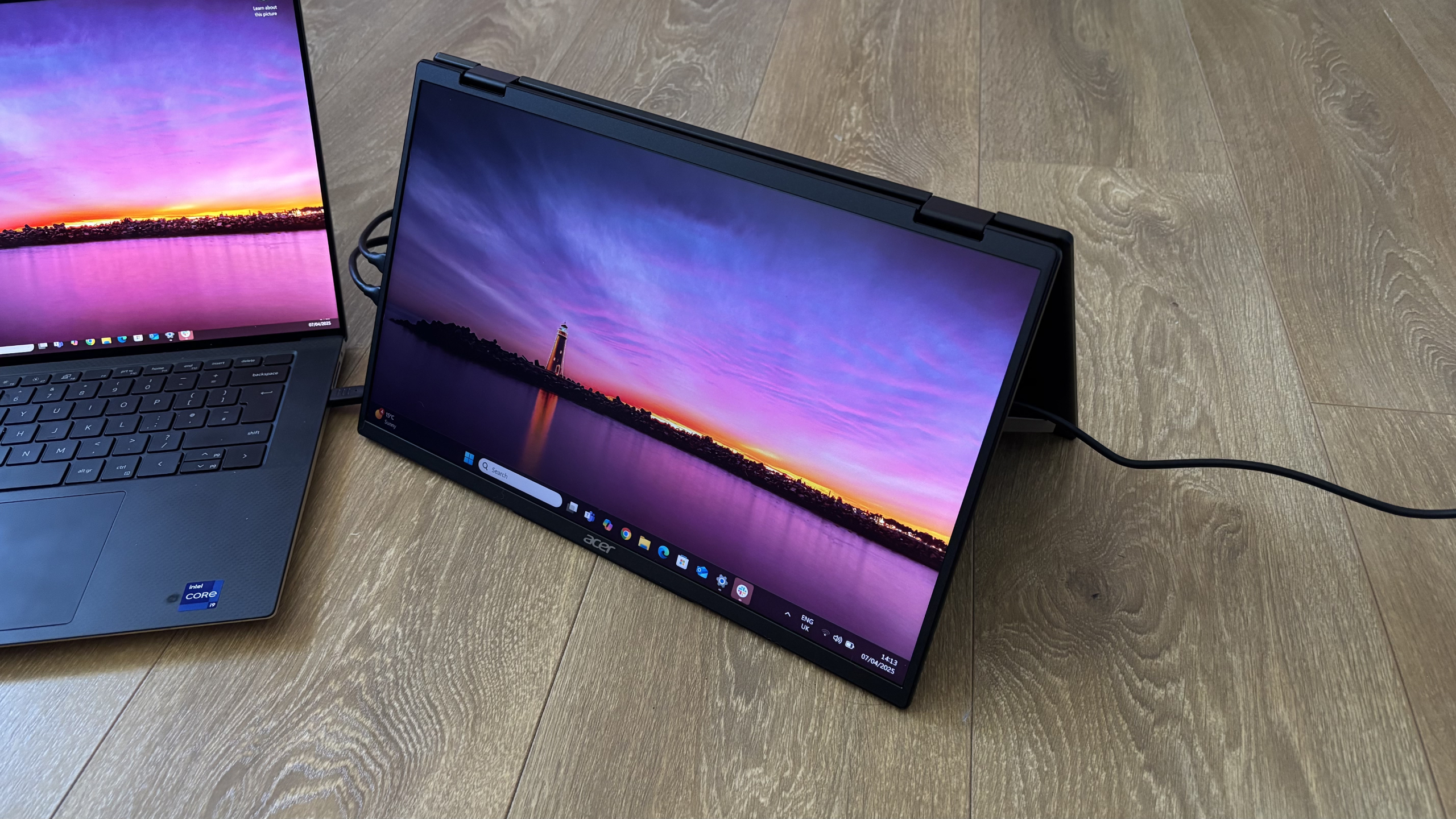
While we already have a round up of the best portable monitors you can find, Acer aims to shake up the rankings with its Acer PD3 Dual-Screen Portable Monitor. This device, similar in fashion to other portable monitors, is small, lightweight and can be folded up to be taken with you on the go.
However what sets the Acer PD3 Dual-Screen Portable Monitor apart is the fact that it has two connected monitors, as the name suggests, for those who need the extra screen space.
One of the first things I noticed when unboxing the Acer PD3 Dual-Screen Portable Monitor is that the device is actually quite heavy, weighing in at over double that of my MacBook Air. Coming in at 2.33kg (5.14 lbs), it definitely isn’t too heavy to take on the go, but it’s by no means the lightest thing in your backpack and very well may make your bag quite hefty when combined with your current laptop.
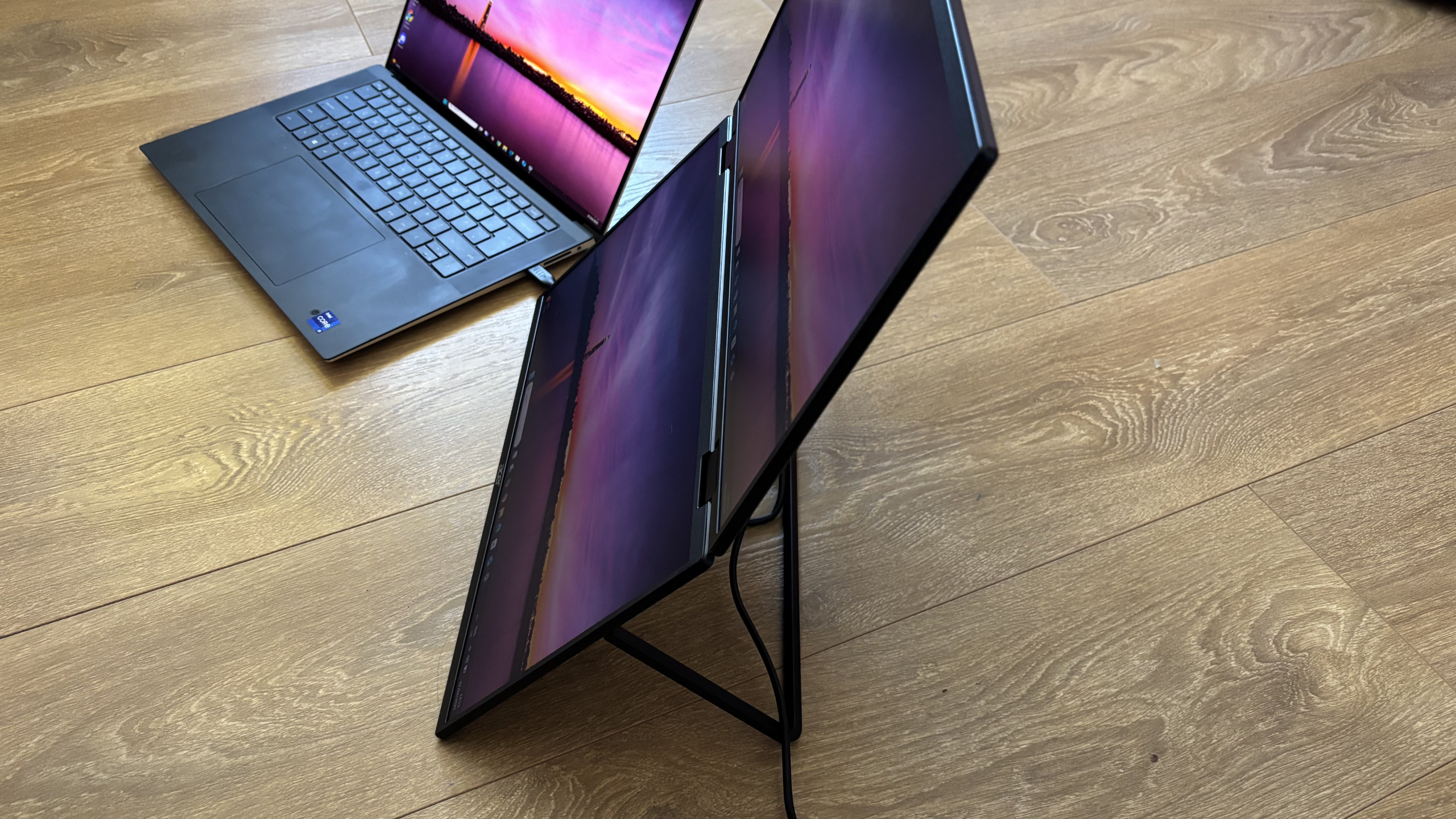
The Acer PD3 Dual-Screen can be opened up like a laptop and used either horizontally or vertically. Initially I was worried the stand would be quite flimsy, but it's stable and holds up the device perfectly fine. In terms of design, the Acer PD3 dual-screen is very sleek and simple. Contained in a black, metal chassis, the device is simple and blends in seamlessly with any set up.
At 2.45cm (0.96in) thick, the device is quite chunky when compared to other laptops and portable monitors on the market. However, it’s worth noting that it's not this thick all the way around, with a large chunk of the monitor being quite thin, which makes it feel somewhat slimmer than it is.
The ports on the monitor are actually located underneath the stand, meaning the stand has to be pulled out in order to access them. While this isn’t the biggest deal in the world, it’s somewhat frustrating at times as you don’t always need to have the stand pulled out to have the monitor stood up.
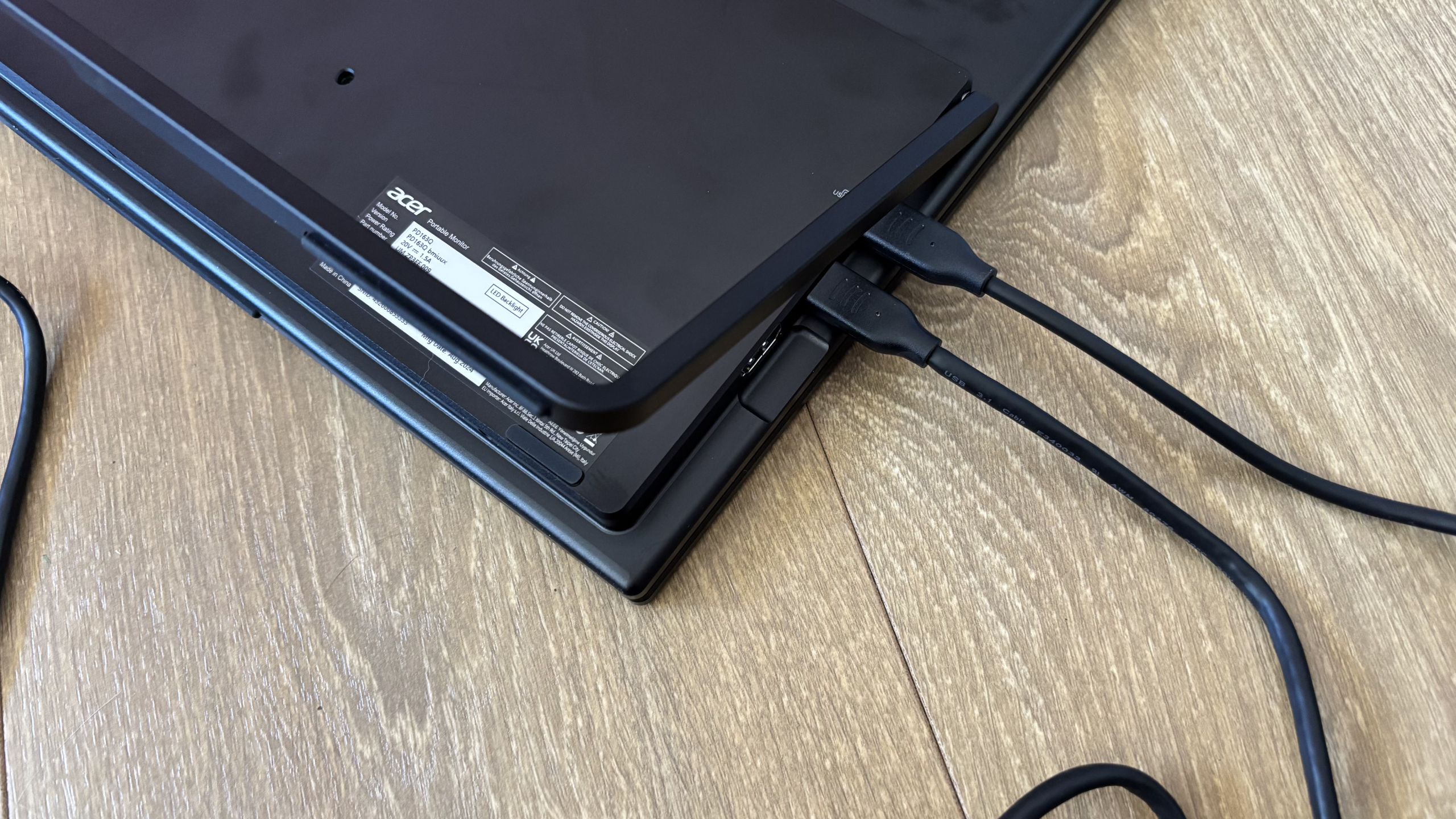
Despite being an LCD panel, the Acer PD3 Dual-Screen Portable Monitor looks absolutely fantastic with a great range of colors and blacks. However one downside is the 250 nits screen, which isn’t the brightest, particularly when using the device on the go in different lighting environments. My laptop, which I used in conjunction with this monitor, has a screen brightness of 500 nits which makes the monitor appear even less bright in comparison.
With each screen coming in at 1920 x 1080p, it seems perfect as I didn’t have to worry about screen sizes and ratios changing when plugging my laptop in - which has the same resolution screen.
When using the Acer PD3 Dual-Screen Portable Monitor, it sufficed perfectly fine. It was easy to use, essentially just being plug and play with it syncing up to my laptop practically instantly.
It’s worth noting that the device can be VESA mounted - and while I didn’t mount it myself since I used it mainly on the go, it’s interesting that you can add it to a single monitor arm for a dual screened display, saving you even more space on your desk if needed.
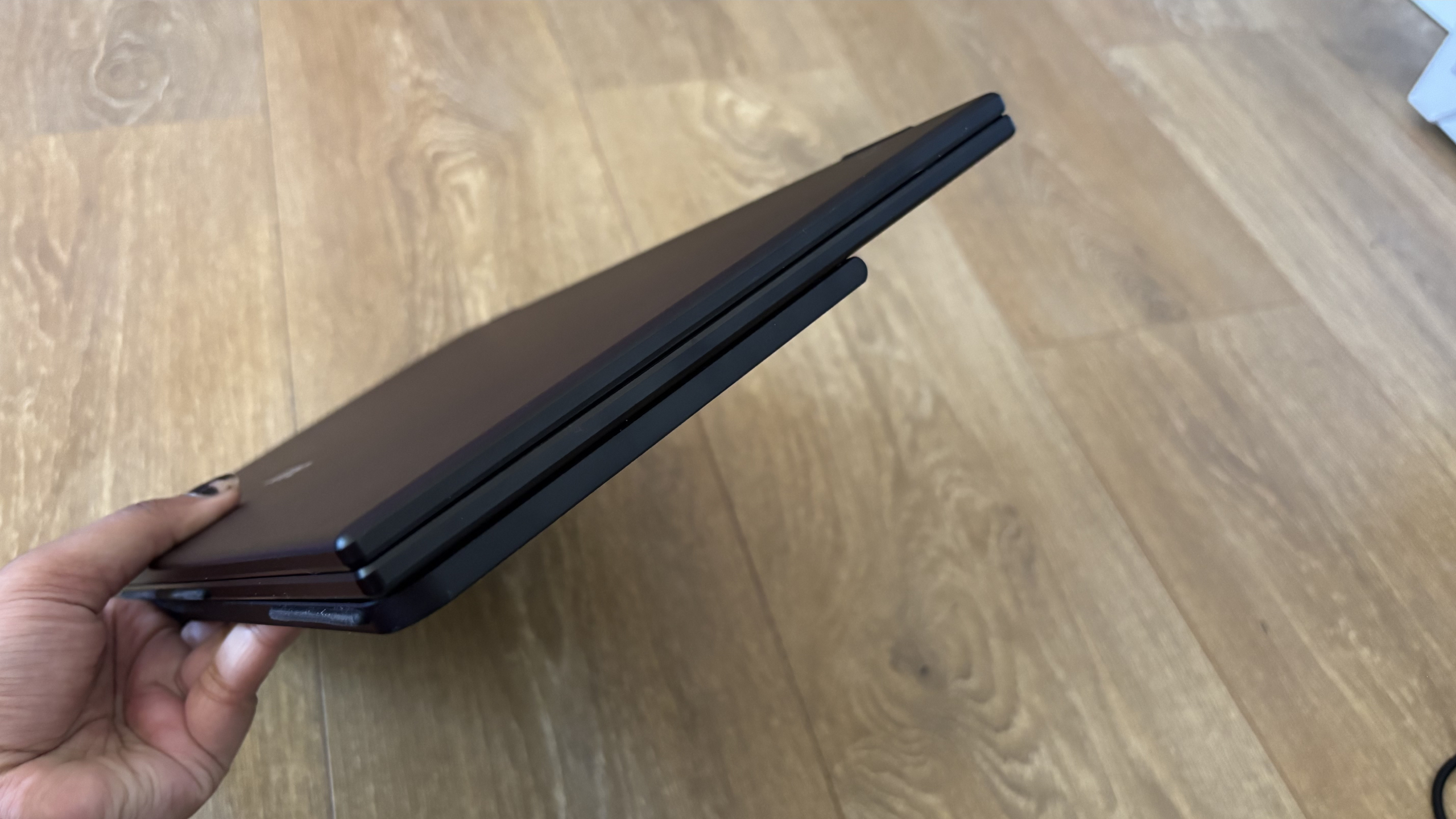
It was easy enough to chuck the Acer PD3 Dual-Screen Portable Monitor in my bag and use it in different locations but I will say it wasn’t something I was comfortable pulling out while on a long train journey or in a coffee shop. The device itself is pretty large and looks quite elaborate so I didn’t find myself using it often when away from a desk. It was fine enough to take to my workspace, where it’s normal to use multiple screens.
However, considering the Acer PD3 Dual-Screen requires its own power outlet to work, it's not something which would be very easy to use on the go anyway. It comes with its own 45W power adaptor which plugs into the device via USB-C. This was frustrating as it meant I also needed to ensure I had the power supply with me when taking the device, which adds even more weight to my bag.
Acer PD3 Dual-Screen Portable Monitor: Price and availability
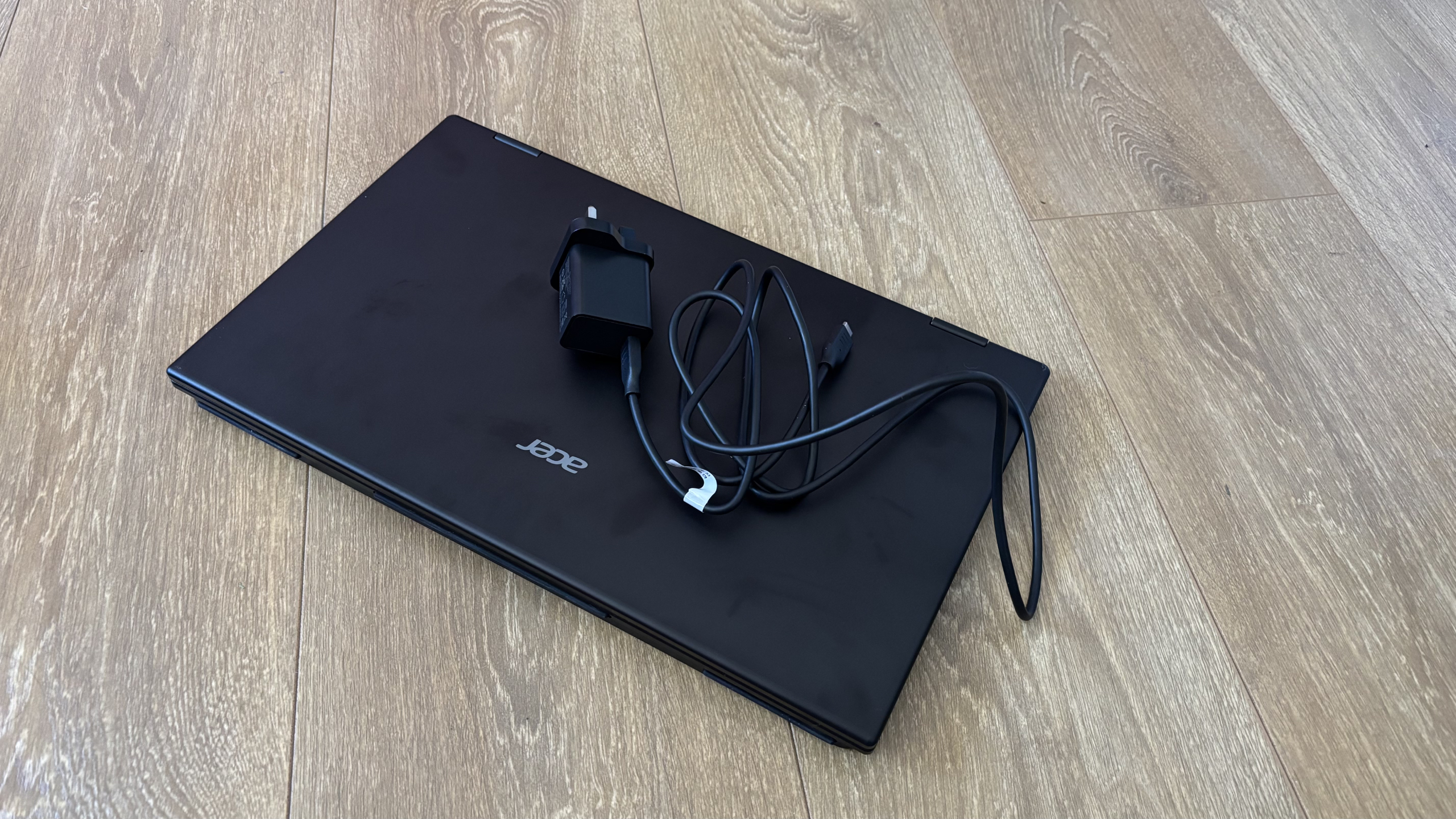
- How much does it cost? $449.99 / £469.99
- When is it available? Available now
- Where can you get it? Available in the US and UK
While quite pricey, the Acer PD3 Dual-Screen Portable Monitor is definitely a more premium option when it comes to these devices. At just under $450 (£469.99), it’s much more expensive than alternative portable monitor options like the AOC 16T3EA portable monitor which costs $129 / £187. However, the AOC 16T3EA is a single screened monitor, whereas the Acer PD3 is dual-screened.
Alternative dual-screen options like the Uperfect Portable Monitor come in at a similar price point to the Acer PD3, at around $449.99 / £449.99. This places the Acer PD3 Dual-Screen Portable Monitor an average priced option for the functionality, but it’s currently hard to judge as there aren’t many alternatives on the market just yet.
Acer PD3 Dual-Screen Portable Monitor: Specs
Here are the specs for the Acer PD3 Dual-Screen Portable Monitor at a glance.
Price | $449.99 / £469.99 |
Display | 2x 18.5-inch 1920 x 1080 |
Panel type | IPS panel |
Response time | 4ms |
Brightness | 250 nits |
Connectivity | HDMI, 2x USB-C ports, Audio 3.5mm jack |
Should I buy the Acer PD3 Dual-Screen Portable Monitor?
Attributes | Notes | Rating |
|---|---|---|
Value | The Acer PD3 dual-screen monitor is quite expensive when compared to alternative portable displays, but with two screens not being a widely available option, it makes sense to be priced so high. | 3 / 5 |
Design | Overall, the design is very sleek. However, the device is quite heavy and thick, making it harder to take on the go with you which is the primary purpose. The ports are also in a strange location. | 2 / 5 |
Performance | Using the device was easy enough, it performed as intended but requiring an extra plug socket does take away from the portability somewhat. | 4 / 5 |
Average rating | The Acer PD3 dual-screen monitor is good enough but has a couple of flaws which take away from how well it performs such as the design and the cost. | 3 / 5 |
Buy it if...
You need multiple displays for the workplace or regular business trips.
If you are going between a home and place of work or need more displays for a trip, then this is a great option.
You want something very simple to set up
Being plug and play, you don’t have to spend time setting this device up each time you use it.
Don't buy it if...
You want something ultra lightweight
The device is quite heavy and adding the weight of the power supply makes your bag even heavier.
You want a device to use while commuting or in public
Considering this monitor needs an extra plug, and is quite large and elaborate, it likely won’t be something you use on the go.
Acer PD3 Dual-Screen Portable Monitor: Also consider
AOC 16T3EA
The AOC 16T3EA portable monitor is only a single screened display, but is significantly cheaper at $129 / £187. It’s also much lighter at 830g, making it easier to take on the go with you and doesn’t require its own power connector which is even less weight in your bag and easier to use.
Read our full AOC 16T3EA review
Arzopa Z1RC
The Arzopa Z1RC is a cheap and cheerful portable monitor, rated our best portable monitor option. Coming in at $120 / £129, it wont set you back as much as Acer’s edition, but again is only single screened.
Read our full Arzopa Z1RC review
How I tested the Acer PD3 dual-screen monitor
I spent a few weeks using the Acer PD3 dual-screen monitor alongside my laptop as a secondary display. I attempted to use the device on the go and take it to different locations with me.
I primarily used the device for working and productivity purposes like editing photos, responding to emails and writing articles. I also used the monitor to watch videos and movies to see how well it displayed different colours.
I’ve tested a range of different displays, monitors and portable devices over the years.
First reviewed April 2025

Jasmine is a gaming hardware and tech journalist with an appreciation for all things others dare to call boring or complicated.
Previously of GamesRadar and The Mirror, Jasmine has reviewed and covered hundreds of devices from laptops to sound bars, monitors to cameras and almost everything in-between.
In her spare time, Jasmine enjoys playing games that make her rage and building PCs, which also makes her rage – as well as spending time with her three cats. Crazy cat lady in the making!
You must confirm your public display name before commenting
Please logout and then login again, you will then be prompted to enter your display name.
